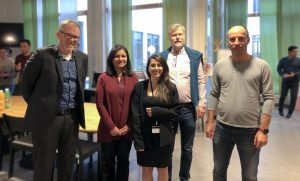The 1st ACM CoNEXT Workshop on Design, Deployment, and Evaluation of Network-assisted video Streaming (ViSNext 2021)
Conference Website
Alireza Erfanian (Alpen-Adria-Universität Klagenfurt), Hadi Amirpour (Alpen-Adria-Universität Klagenfurt), Farzad Tashtarian (Alpen-Adria-Universität Klagenfurt), Christian Timmerer (Alpen-Adria-Universität Klagenfurt), and Hermann Hellwagner (Alpen-Adria-Universität Klagenfurt)
Abstract: Live video streaming is widely embraced in video services, and its applications have attracted much attention in recent years. The increased number of users demanding high quality (e.g., 4K resolution) live videos increase the bandwidth utilization in the backhaul network. To decrease bandwidth utilization in HTTP Adaptive Streaming (HAS), in on-the-fly transcoding approaches, only the highest bitrate representation is delivered to the edge, and other representations are generated by transcoding at the edge. However, this approach is inefficient due to the high transcoding cost. In this paper, we propose a light-weight transcoding at the edge method for live applications, LwTE-Live, to decrease the band-width utilization and the overall live streaming cost. During the encoding processes at the origin server, the optimal encoding decisions are saved as metadata, and the metadata replaces the corresponding representation in the bitrate ladder. The significantly reduced size of the metadata compared to its corresponding representation decreases the bandwidth utilization. The extracted metadata is then utilized at the edge to decrease the transcoding time. We formulate the problem as a Mixed-Binary Linear Programming (MBLP) model to optimize the live streaming cost, including the bandwidth and computation costs. We compare the proposed model with state-of-the-art approaches and the experimental results show that our proposed method saves the cost and backhaul bandwidth utilization up to 34% and 45%, respectively.
Keywords: live video streaming, network function virtualization, NFV, light-weight transcoding, transcoding, edge computing














